I’m spending lots of time in my yard this month, winterizing my lavender, raking up leaves, and rescuing my bulbs from the pesky squirrels, who are burying deeper than usual, to unearth my spring flowers planted using the bulb lasagna technique. There are plenty of pests to deter and jobs to keep me busy.
However, there’s one task that can be forgotten among the myriad of other jobs. While we take care of our lawns in the spring and summer, it can be easy to forget that they still need some maintenance in the fall.
Paying attention to the weeds in your lawn as the leaves fall from the trees will pay rich dividends in the spring as growth kicks in. Here, we’ve called on lawn experts to share their top tips on why fall is a good time to remove weeds and the best way to do it.
What problems do weeds cause in a lawn?
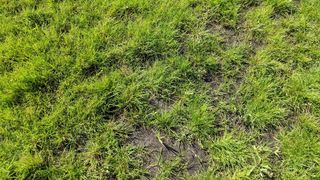
“Weeds rob your grass of vital nutrients, water, and sunlight — weakening your lawn over time,” says Gene Caballero, Co-founder at GreenPal.
“This competition can result in a patchy and unhealthy lawn because the weeds outcompete the grass, leading to thinning and making the lawn more vulnerable to pests and diseases,” explains Robert Baker, Chief Weed Expert at ScottsMiracle-Gro R&D.
“What makes it worse is that some weeds spread aggressively, taking over large areas quickly and decreasing the aesthetic appeal of your lawn,” he adds.
Common weeds that wreak havoc with a lush lawn include crabgrass, dandelions, and clover. “They are particularly aggressive, thriving in lawns that lack proper maintenance,” Caballero adds.
Why is fall the best time to control weeds?
Fall is an effective time for weed control because perennial weeds are busy absorbing nutrients to prepare for the winter. Baker explains, “When you apply weed control treatments in the fall, the weeds take in the herbicide along with the nutrients, transporting it to their roots. This results in more effective eradication.”
He continues, “The soil is still warm from the summer, which promotes herbicide effectiveness, while cooler air temperatures minimize stress on your lawn. Some annual weeds, like chickweed, germinate in the fall and are more effectively controlled when they are small in size.”
What will happen to your lawn if you leave the weeds alone?
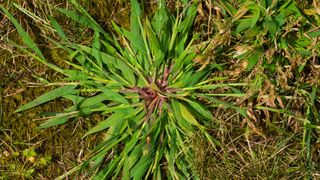
If weeds are left untreated, Caballero says they will continue to spread, “making removal more expensive and much harder.”
So, those weeds that were left untreated will come back stronger and may spread more aggressively in the spring. “This can lead to an overrun lawn where grass struggles to grow,” says Baker.
He also points out that the lawn could become prone to erosion and less resilient to stress from drought, foot traffic, or other environmental factors.
What are the best tips to prevent weeds from taking hold in the first place?
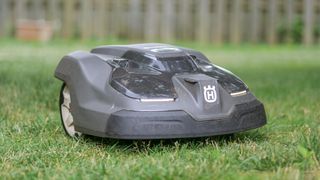
Preventing weeds from taking hold begins with maintaining a healthy lawn, and unfortunately, there’s no shortcuts to getting the perfect lawn. “Regular mowing, watering, and fertilizing help create a dense turf that leaves little room for weeds,” says Caballero.
Baker recommends mowing your lawn at the correct height, “Cutting grass too short can stress it and leave space for weeds to grow. Keep your mower set to the recommended height for your grass type.”
If you have a large expanse of lawn you might want to consider investing in a robot lawnmower to cut down on all the hard work.
He also recommends using a pre-emergent herbicide. “In early spring, a pre-emergent can help stop weed seeds from sprouting. Weeds germinating in the fall can be prevented using a pre-emergent herbicide in the early fall.”
How to remove weeds from your lawn
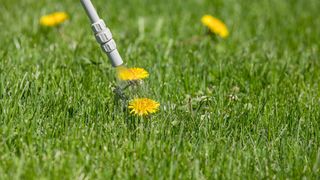
For small infestations of weeds, Baker suggests removing them manually, advising to pull them from the base to get rid of as much root as possible. Remember to wear a pair of the best gardening gloves to protect your hands.
“This method is environmentally friendly, cost-effective, and allows you to target weeds precisely,” says Callaero. However, he adds, “It can be time-consuming and labor-intensive, especially if weeds have deep or widespread root systems.”
You can also use a tool designed for the job, such as Grampa’s Weeder ($39 at Amazon). This long-handled tool will save you from getting down on your hands and knees to remove weeds.
Once you've removed the weed it's also worth filling in the bare spots with grass seed to prevent weeds from returning. You can also add a thin layer of topsoil and overseed to maintain a thick lawn.
For persistent weeds, Callabero says they should be spot-treated with a post-emergent herbicide. “This method quickly kills tough weeds without harming the surrounding grass if applied correctly.” However, he warns, “If applied incorrectly, it can damage your lawn or nearby plants.”
To ensure the product is used correctly, he suggests, “Follow the label instructions carefully and only apply during calm weather to prevent overspray, and only target the weeds to minimize contact on surrounding grass or plants.”
More from Tom's Guide
- Discover 9 tips to revive dead grass and make your lawn green again
- And 5 fall lawncare tips you need to know, according to experts
- Plus, 7 ways to prevent weeds from taking root in your yard fall
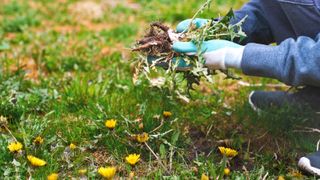


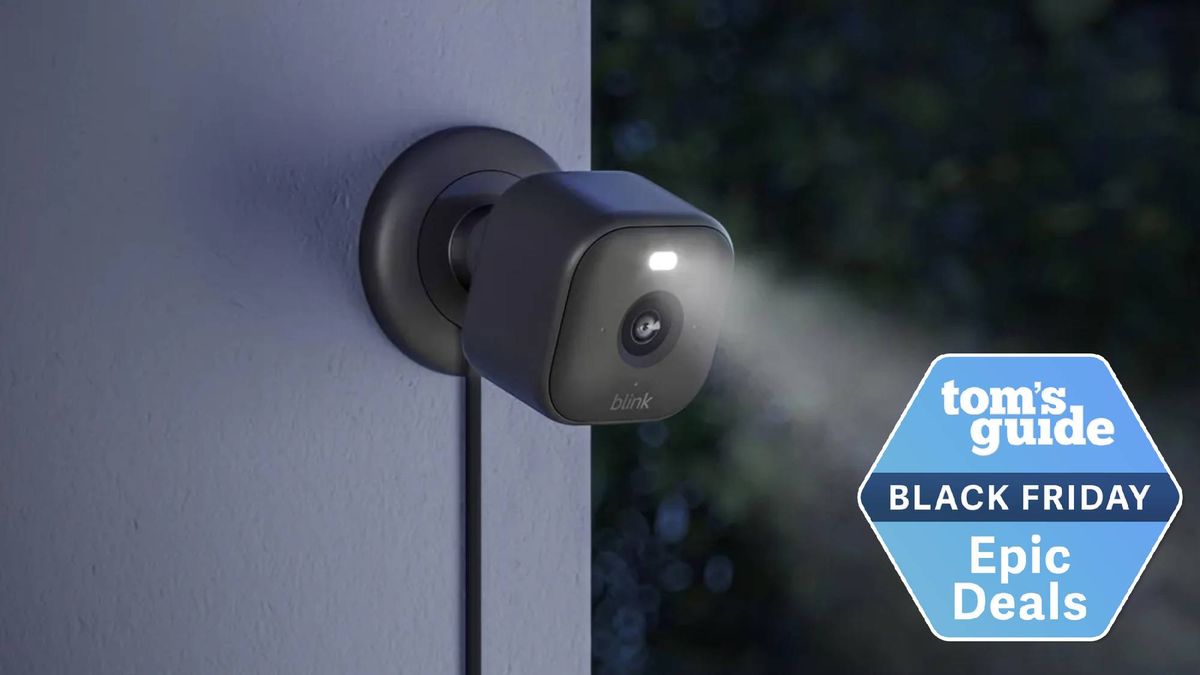

















 English (US) ·
English (US) ·